The Christmas Cactus is a beloved holiday plant known for its vibrant blooms, but sometimes, despite your best efforts, it just doesn’t flower.
This article will explore some common reasons why your Christmas Cactus might be missing those beautiful blossoms.
Understanding the key factors that affect blooming can help you enjoy a more colorful and lively holiday plant. From light exposure to watering habits, there are several aspects to consider to ensure your Christmas Cactus thrives.
1. Lack of sunlight
Your Christmas cactus needs adequate sunlight to bloom. Place it in a location where it can receive bright, indirect light.
Direct sunlight can be too harsh, leading to burnt leaves.
If your cactus is in a dim area, its ability to produce flowers will be limited. Consider using a grow light if natural light is insufficient.
2. Improper watering
Your Christmas Cactus might not bloom if you’re watering it incorrectly. Overwatering can lead to root rot, making it difficult for the plant to produce flowers.
On the other hand, underwatering can cause the cactus to become stressed, leading to a lack of blooms.
Ensure you are providing the right amount of water consistently.
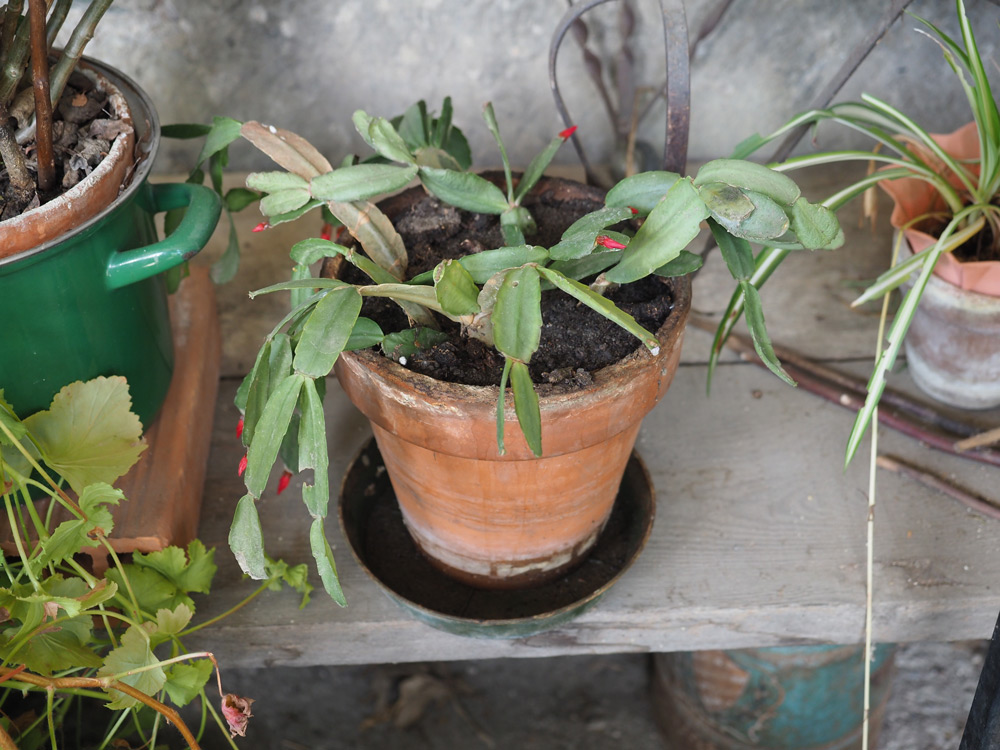
3. Incorrect temperature
Your Christmas Cactus might not bloom because it’s too warm or too cold. These plants prefer cooler temperatures to set buds.
Make sure the temperature is between 50-60°F (10-15°C) at night. During the day, it should be slightly warmer, but not over 70°F (21°C).
Avoid placing the plant near drafts or heating vents, as this can disrupt the blooming cycle.
4. Inadequate nutrients
Your Christmas cactus needs the right nutrients to bloom. If it’s not getting enough, the flowers may not develop properly.
Make sure you’re using a balanced fertilizer. Feed your cactus every two weeks during the growing season.
Don’t forget to check the soil. Poor-quality soil can lack the essential nutrients your cactus needs.
5. Wrong pot size
Choosing the right pot size for your Christmas cactus is crucial. If the pot is too large, the plant may focus on root development rather than blooming. Conversely, a pot that is too small may restrict root growth and limit the nutrients available to the plant.
A snug-fitting pot encourages blooms by gently stressing the roots. Make sure drainage is sufficient to prevent root rot.
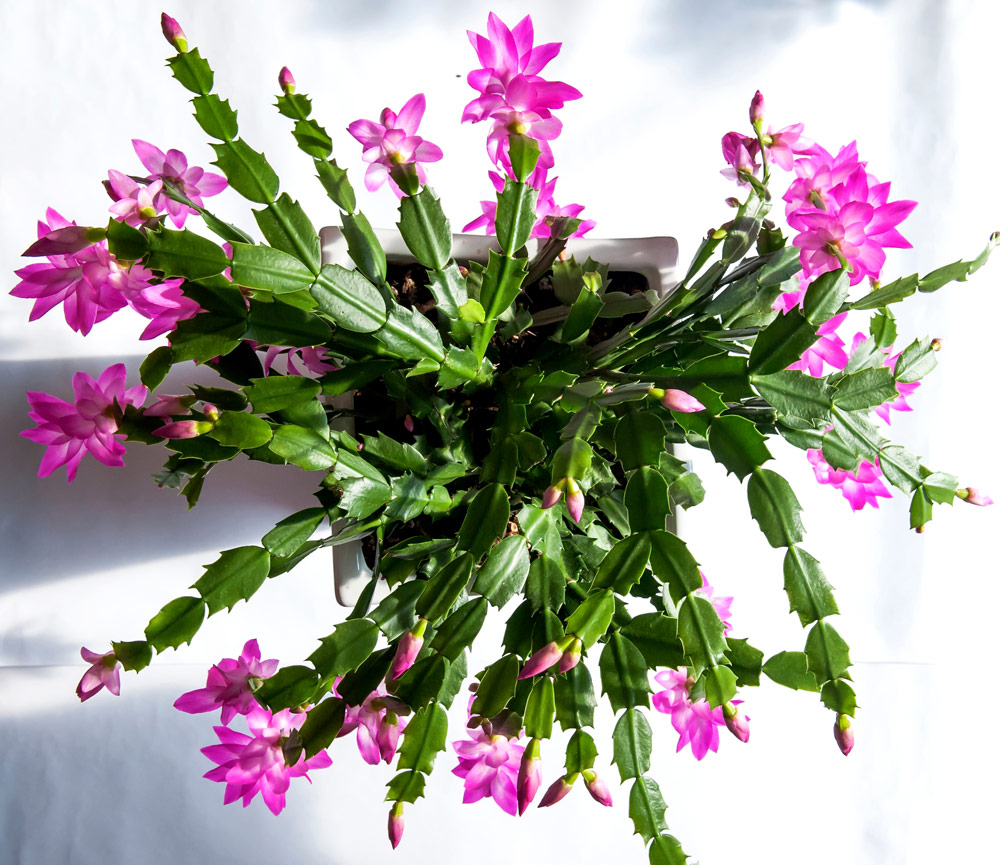
6. Pests infestation
Pests can be a major reason why your Christmas cactus isn’t blooming. Tiny insects like spider mites or aphids can drain the plant’s energy. This weakens your cactus, making it hard for it to produce flowers.
Regularly inspect your plant for signs of pests. If you notice any, treat them promptly with insecticidal soap or a natural remedy. Keep the humidity level balanced to deter pests.
7. Overfertilization
You might think more fertilizer is better, but that’s not the case for your Christmas cactus.
Too much fertilizer can lead to excessive leafy growth at the expense of blooms.
Stick to a balanced fertilizer every four to six weeks during the growing season and stop feeding it in the fall to encourage blooming.
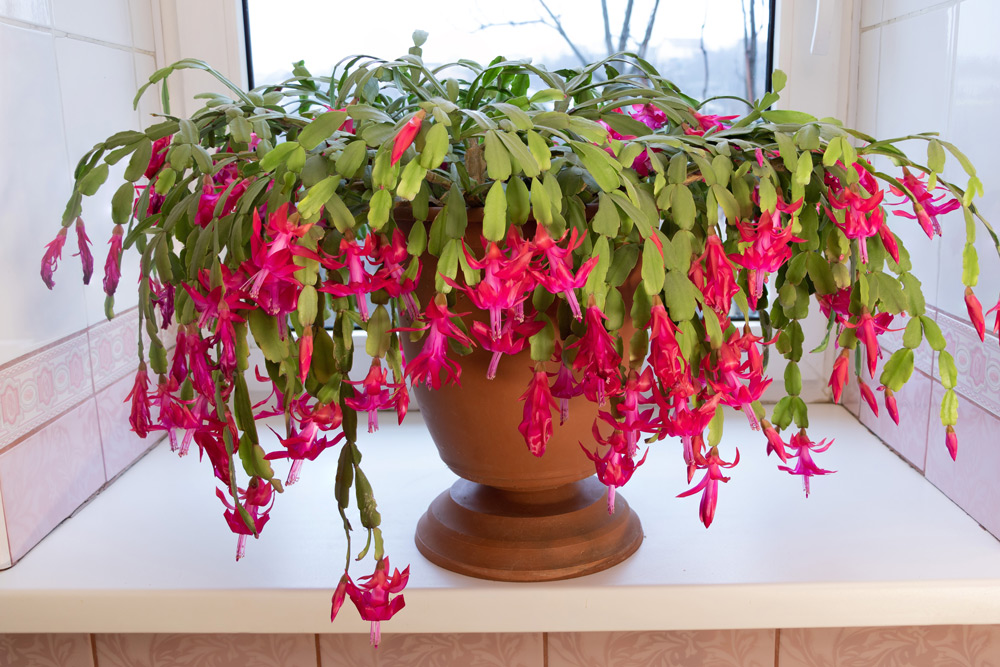
8. Low humidity
Your Christmas cactus naturally thrives in humid environments. When the humidity levels in your home are too low, it can negatively affect its blooming.
Try placing a humidifier near the plant or setting it on a water-filled pebble tray. This can help provide the necessary moisture. Misting the plant lightly can also aid in maintaining the needed humidity.
9. Poor soil drainage
Your Christmas Cactus loves well-draining soil. When soil doesn’t drain properly, it can lead to waterlogged roots.
Waterlogged roots can cause root rot, which prevents your cactus from blooming. Use a pot with drainage holes and a cactus-specific potting mix to prevent this.
Avoid using heavy, compact soil that retains too much moisture. By ensuring good drainage, you’ll help your Christmas Cactus thrive.
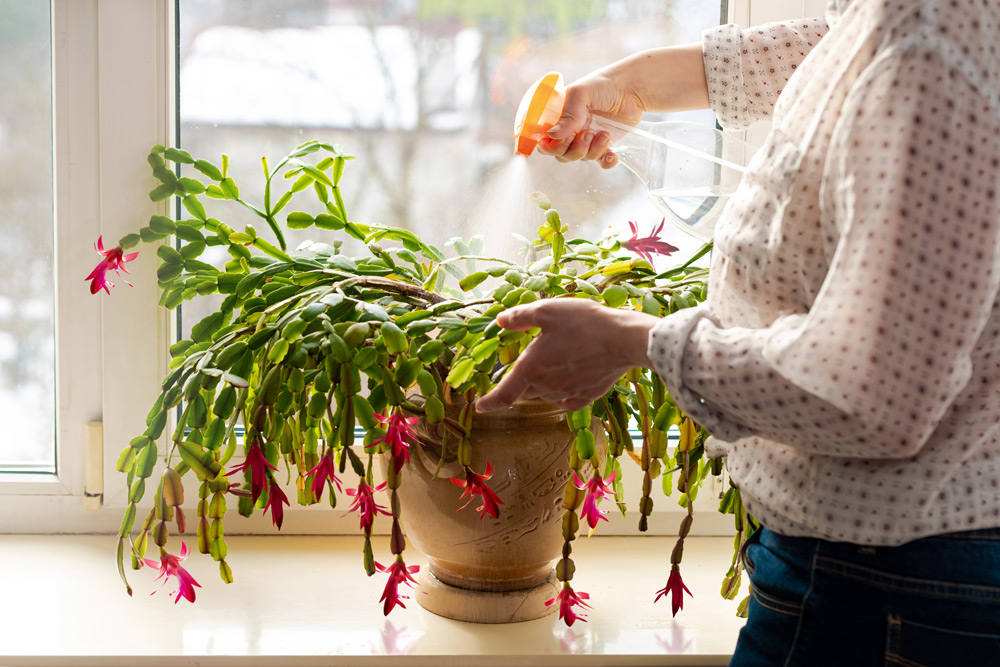
10. Out-of-season care
Your Christmas cactus needs proper care even when it’s not blooming. Water it regularly, but let the soil dry slightly between waterings. Keep the plant in bright, indirect light.
During its rest period, reduce watering and avoid fertilizing. This helps the plant conserve energy and prepare for the next blooming cycle. Regular care year-round ensures vibrant blooms in the holiday season.
Understanding Your Christmas Cactus
Your Christmas Cactus can brighten up your home, but it requires specific care to thrive. Knowing its botanical details and understanding its growing conditions is essential for it to bloom beautifully.
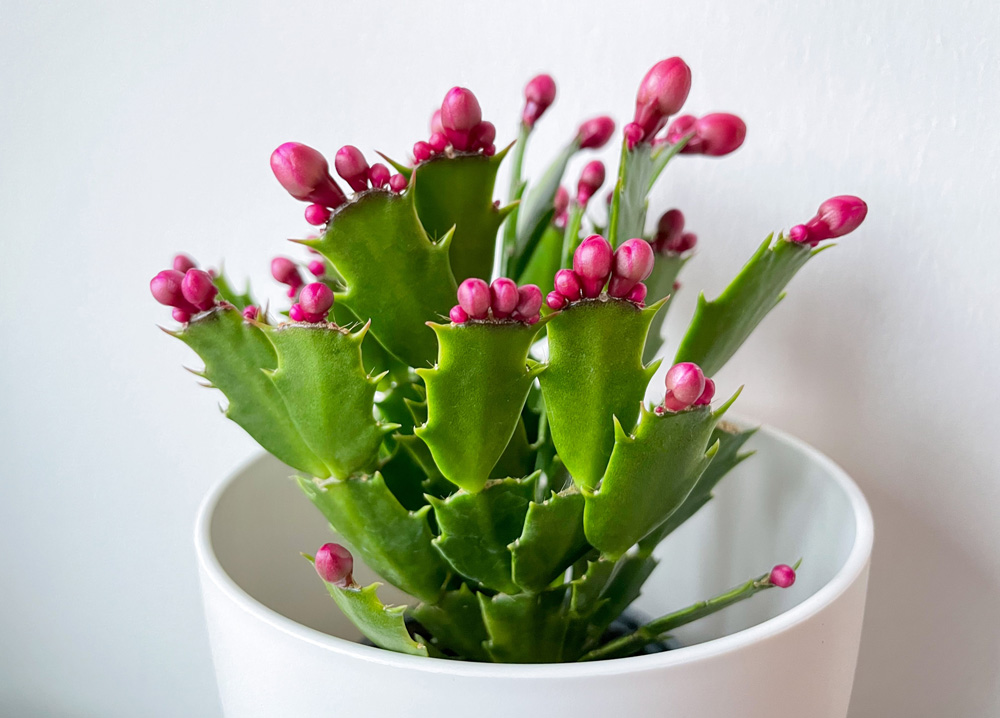
Botanical Basics
The Christmas Cactus, Schlumbergera species, originates from Brazilian rainforests. Unlike desert cacti, it enjoys humid, shaded environments with features like flat, segmented stems.
Key characteristics:
- Scientific name: Schlumbergera bridgessii
- Common names: Holiday Cactus, Thanksgiving Cactus, Easter Cactus
- Bloom period: Late fall to early winter
Knowing these botanical particulars aids you in understanding its unique requirements, differentiating it from traditional cacti.
Ideal Growing Conditions
Creating the right environment is crucial for your Christmas Cactus. It thrives in well-drained soil, indirect light, and prefers temperature ranges of 60-70°F.
Checklist:
- Light: Bright, indirect sunlight
- Soil: Well-draining, rich in organic matter
- Temperature: 60-70°F for optimal growth
Humidity: Aim for about 50-60%. Regular misting helps maintain this level. Watering should be moderate, allowing the soil to dry out slightly between waterings. Proper care encourages healthy growth.
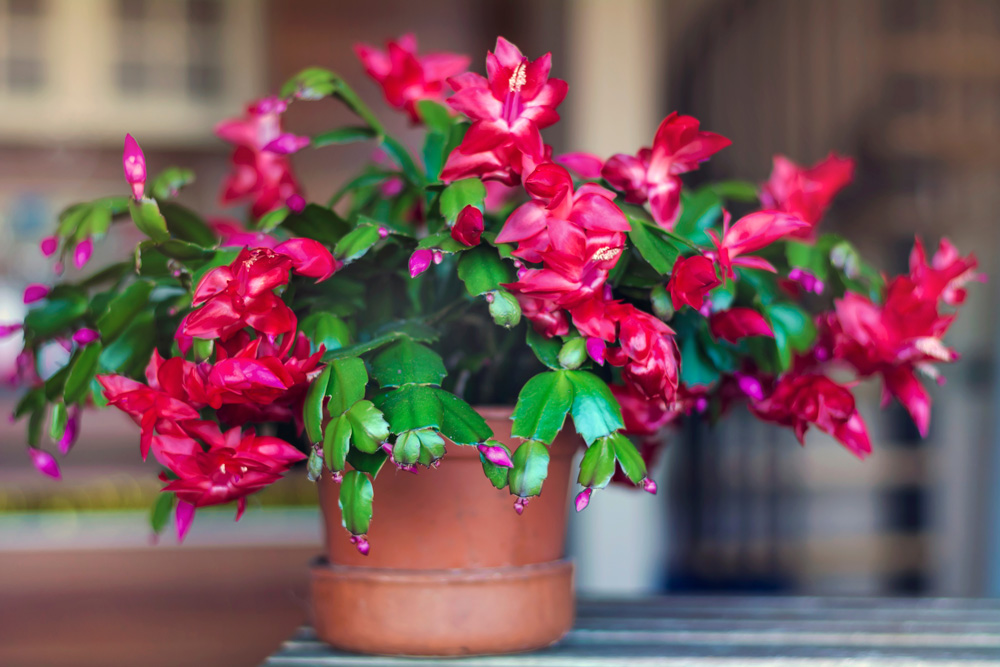
Common Issues Preventing Blooming
Your Christmas Cactus might not be blooming for several reasons, including problems with lighting, watering practices, and nutrient availability. Addressing these issues can significantly improve the likelihood of beautiful blooms.
Lighting Problems
Christmas Cacti need specific light conditions to bloom. They require bright, indirect light. Too much direct sunlight can scorch their leaves, while insufficient light prevents bud development.
Ensure your plant gets around 8-10 hours of light daily. During fall, reduce the daylight hours gradually to mimic natural conditions. You can achieve this by placing your cactus in a spot where it receives bright light during the day but not constant direct sun.
Moving the plant to a darker area for about 12-14 hours each night in the fall will encourage blooming. Avoid artificial lights during this dark period to maintain proper cycles.
Improper Watering
Watering plays a crucial role in the blooming of your Christmas Cactus. Overwatering can lead to root rot, while underwatering can cause the plant to become stressed and fail to bloom.
Water your cactus when the top 1-2 inches of soil feels dry to the touch. Ensure that the pot has good drainage to prevent water from sitting at the bottom. During the growing season, typically spring and summer, maintain a regular watering schedule.
In fall and winter, reduce watering slightly, allowing the soil to dry out a bit more between waterings. Consistency is key; erratic watering can inhibit bloom production.

Nutrient Deficiency
Christmas Cacti require specific nutrients to produce blooms. A lack of essential fertilizers can result in poor blooming. Feed your cactus with a balanced, water-soluble fertilizer.
During the growing season, apply a fertilizer with a higher phosphorous content every two to four weeks. Avoid high-nitrogen fertilizers, as these promote foliage growth at the expense of flowers.
Maintain a regular fertilizing schedule and ensure the plant receives the necessary nutrients. Stop fertilizing in late summer to early fall, as this prepares the cactus for blooming by reducing leafy growth and focusing energy on bud formation.



